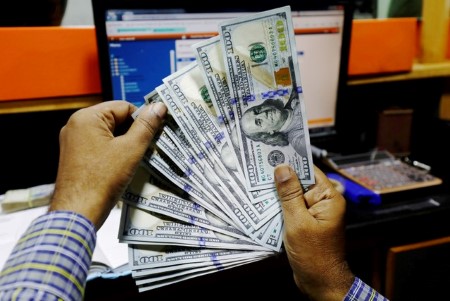




Policy Rate Updates: Closer to BSP’s Goldilocks moment
 DOWNLOAD
DOWNLOAD

Inflation Update: Speeds up but remains below target
 DOWNLOAD
DOWNLOAD

Monthly Economic Update: Fed back on track
 DOWNLOAD
DOWNLOAD


Yields slip ahead of Powell’s Friday speech

NEW YORK – Yields on US government debt eased on Monday as the market counted down to Federal Reserve Chair Jerome Powell’s keynote speech at the Jackson Hole symposium at the end of the week.
There is little in the way of data to divert attention before then.
The Conference Board said on Monday its leading economic index fell 0.6% in July. That was worse than June’s 0.2% fall and the 0.3% decline expected by economists polled by Reuters. But the index is a secondary indicator and Treasuries stayed in their narrow ranges.
On Wednesday, the Labor Department will release a preliminary revision to 2024 payrolls through March, potentially a market factor if it shows a much different labor picture than the Fed has been banking on as it moves toward cutting interest rates.
Flash PMIs, July home sales, and weekly unemployment claims round things out on Thursday but, barring big surprises, are unlikely to upset markets.
The minutes of the Fed’s July meeting will be released on Wednesday, which will be backward-looking when investors are 100% focused on what the Fed will do at its Sept. 17-18 meeting.
“It’s super benign. The curve has barely moved, you are not seeing much happening in peripheral things like swap spreads and inflation expectations,” said Jan Nevruzi, US rates strategist at TD Securities in New York.
High rates may be on the way out, and Powell could provide more information about the approach to policy easing in his Friday speech at the Kansas City Fed’s annual conference in Wyoming.
Fed speakers in recent days have laid the groundwork for Powell’s Jackson Hole remarks.
In an interview with the Financial Times published on Sunday, San Francisco Federal Reserve Bank President Mary Daly said it is time to consider adjusting borrowing costs from their current range of 5.25% to 5.5%.
Minneapolis Fed President Neel Kashkari said the debate about potentially cutting rates in September is an appropriate one to have because of a rising possibility of a weakening labor market, the Wall Street Journal reported on Monday.
“The balance of risks has shifted,” Kashkari told the Journal in an interview conducted on Friday.
“The interesting things of the week will be the (Fed) minutes and then the benchmark revision on payrolls, both on Wednesday, and of course Powell on Friday morning,” said Lou Brien, market strategist at DRW Trading in Chicago.
Based on the fed funds futures term structure, traders see about a 78% chance of a 25 basis points easing of the policy rate, which has been in its current target range since the Fed stopped hiking rates in July 2023.
“On the one hand, Powell could just confirm what almost everyone already assumes: The Fed will cut rates next month. On the other hand, he could feel no compulsion to confirm it when there is still employment and inflation data to be released before the Sept. 18 decision,” Will Compernolle, macro strategist at FHN Financial said in a client note on Monday.
The yield on the benchmark US 10-year note fell 2.8 basis points from late Friday to 3.864%.
The two-year note yield, which typically moves in step with interest rate expectations, fell 0.4 basis points to 4.0618%.
The 30-year bond yield fell 4 basis points to 4.1114%.
The closely watched gap between yields on two- and 10-year Treasury notes, considered a gauge of growth expectations, was at negative 20 bps, a bit more inverted than Friday’s negative 17.1 bps.
The implied breakeven inflation rate on 10-year Treasury Inflation Protected Securities (TIPS) was slightly higher at 2.0712%.
The five-year TIPS breakeven inflation rate slipped to 1.9607%, suggesting that investors think annual inflation will average below the Fed’s 2% target rate for the next five years.
(Reporting by Alden Bentley; editing by Jonathan Oatis)
This article originally appeared on reuters.com





 By Reuters
By Reuters